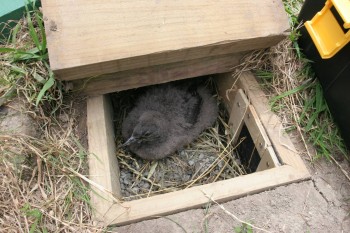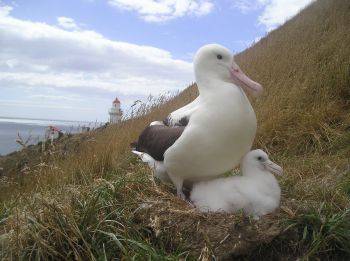From time to time, ACAP has published on its roles and activities in scientific journals, scholarly books, in the popular literature and via presentations at scientific conferences (see the list of selected literature below). Most recently the Agreement has been featured in a two-volume geographic encyclopaedia of the World’s Arctic and Antarctic Regions.
The Action Plan for the Agreement on the Conservation of Albatrosses and Petrels (ACAP) states in its Article 6 on Education and Public Awareness that:
“The Parties shall seek to make information on the conservation status of albatrosses and petrels, the threats facing them, and the activities taken under the Agreement, available to the scientific, fishing and conservation communities, as well as to relevant local authorities and other decision-makers, and to neighbouring states” (6.1); and
“The Parties shall seek to make local communities and the public in general more aware of the status of albatrosses and petrels and the threats facing them” (6.2).
One of the ways that these two objectives are being achieved is via daily postings to ACAP Latest News on this website, which are then copied to ACAP’s Facebook Page (currently with just below 1900 members). Since 2006 these research and conservation news stories have covered abstracts of scientific publications, reports of ACAP attendances at meetings of international fishery management organizations with seabird bycatch issues, news of conferences, field trips and alien eradications as well as book reviews, obituaries, grant and employment opportunities and more.

White-phase Southern Giant Petrel in Antarctica, photograph by Michael Dunn
Selected Literature:
Cooper, J. 2006. Conservation of albatrosses and petrels of the Southern Ocean. In: Boere, G.C., Galbraith, C. & Stroud, D.A. (Eds). Waterbirds around the World. Edinburgh: The Stationary Office. pp. 113-119.
Cooper, J. 2014. Agreement on the Conservation of Albatrosses and Petrels (ACAP). In: Hund, A.J. (Ed.). Antarctica and the Arctic Circle: a Geographic Encyclopedia of the Earth's Polar Regions. Santa Barbara: ABC-CLIO.
Cooper, J. & Baker, G.B. 2008. Identifying candidate species for inclusion within the Agreement on the Conservation of Albatrosses and Petrels. Marine Ornithology 36: 1-8.
Cooper, J. & Misiak, W. 2015. The Agreement on the Conservation of Albatrosses and Petrels: a growing resource for information on procellariiform research and conservation. Second World Seabird Conference, Cape Town, South Africa, October 2015 [submitted abstract].
Cooper, J. & Ryan, P.G. 2014. Progress with supporting the Albatross and Petrel Agreement on the outer islands of Tristan da Cunha. Tristan da Cunha Newsletter 54: 32-34.
Cooper, J., Baker, G.B., Double, M.C., Gales, R., Papworth, W, Tasker, M.L. & Waugh, S.M. 2006. The Agreement on the Conservation of Albatrosses and Petrels: rationale, history, progress and the way forward. Marine Ornithology 34: 1-5.
Cooper, J., Morgan, K.H. & Tasker, M.L. 2009. Listing North Pacific albatrosses within the Agreement on the Conservation of Albatrosses and Petrels. Marine Ornithology 37: 189-191.
Harris, J. 2007. Albatrosses and Petrels, Agreement for the Conservation of. In: Riffenburgh, B (Ed.). Encyclopedia of the Antarctic. Vol. 1. New York: Routledge. pp. 15-17.
John Cooper, ACAP Information Officer, 10 March 2015


 English
English  Français
Français  Español
Español 


